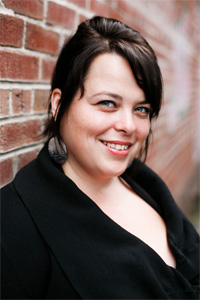Collective member Kelly Thompson asks CWILA Critic-in-Residence Shannon Webb-Campbell a few questions about literature, poetry, and reviewing.
The Canadian Women in the Literary Arts (CWILA) has just announced its 2014 Critic-in-Residence, writer, poet and arts journalist Shannon Webb-Campbell. No stranger to the arts herself, Shannon has written for the likes of Quill & Quire, Riddle Fence and Room. She holds a degree in English Literature and Journalism from Dalhousie and is currently busy with a Masters in Fine Arts in Creative Writing from the University of British Columbia.
In Room’s 2008 contest, Shannon won 2nd place for her creative non-fiction piece, “Newfoundlesbian.” Of being published in Room at that point in her writing career, Shannon said, “At the time, I found a space for my early 20s exploration of sexuality, identity, and creative writing…”
Room sat down with Shannon to discuss all things literary.
ROOM: Who are your favourite female authors that have had the greatest influence on your work?
SWC: There are a tremendous amount of incredible female authors I’ve admired over the years: Sylvia Plath, Joan Didion, Lisa Moore, Eden Robinson, Anne Micheals, Anne Carson, and Alice Munro. The list of influences is long and always growing. Susan Musgrave, Heather Jessup, Sue Goyette, Zoe Whittall, and Sue Sinclair.
Each of these women hold a place in my poetic heart, some I’ve known only on the page, others continue to shape, mold, and remind me we’re all here together, carving out our life’s work as writers, sharing the planet and creative deep. I’m thankful to be in such good company.
ROOM: What’s your preferred genre of writing to review and read and why?
SWC: I’m a reader of all kinds—fiction, non-fiction, short stories, children’s literature—but my true love as a reader and reviewer is poetry. It’s my incubator, a place where I feel both safe and unhinged; poetry offers a call to wildness. As a reviewer, poetry is a genre often overlooked in criticism or tends to be avoided. Some critics confess its intimidation, others dismiss the genre altogether. For me, poetry is underdog. Poetry is gospel. Poetry is both blueprint and relic. Poetry is my favourite conversation to explore as a critic, it’s dangerous and unknown, foreign yet familiar.
ROOM: As a critic and reviewer of books for the CWILA, Quill & Quire and others, what makes a book/collection stand out for you? Do you have key components that you look for?
SWC: Books are like dresses, some fit your shape, accent your intellectual curves, and others just don’t suit your style. I tend to gravitate towards books that push boundaries, and explore the fringes—whether it’s art, sexuality, nationality, gender, spirituality, or geographic exploration itself. When an editor sends a book list typically I scan it for something that resonates. Typically, as a critic I opt to read books by women, queer, or Indigenous persons.
Certainly, there are some Canadian publishing houses I’m inclined to pay close attention to—Invisible Publishing, House of Anansi, Coach House, Goose Lane, Gaspereau Press, Arsenal Pulp Press—mostly, because I’ve loved so much of their backlists. But I try to remain open to whatever rouses my interest. A good book/collection is the combination of the right cut, colour, and fabric.
ROOM: You’re a lover of many different arts (fashion, photography and perhaps hats in their own category). How does that broad artistic knowledge and passion drive your own writing?
SWC: Art is integral to life. I think all forms of creativity fuel a writer’s passion. Walking is essential to my practice as a writer, and with it comes a need to get dressed, which creates an opportunity for expression, and often wandering the streets, through the woods, or oceanside, I can’t help but notice details, the way the day’s light fades, or how red leather boots accent white snowdrifts. It’s all about paying witness to our surroundings and the echoes within. It’s all story—fashion, art, photography, hats—and all these things combined are a reminder to remain playful and curious. Both are key as a writer.
ROOM: As a critic, how do you approach a book while maintaining respect for the author and their work?
SWC: Every book I read and review is worthy of respect. As a writer, I understand the tremendous amount of work at hand, and want to honour the author’s efforts, as well as remain true to the role of a reader. As a critic, it is my duty to review books with keen-minded truthfulness and a sense of its need for publication, its place amongst the bookshelf so-to-speak. I think it’s important for reviewers to contextualize a book, to answer what compelled the critic to read it in the first place, and in turn, offer insight and criticism to potential readers.
ROOM: Why do you feel it is important to have women reviewing and critiquing the work of other women?
SWC: Women writers deserve to have their work critiqued by reviewers of all genders, as well as by critics who don’t prescribe to the gender binary. Given the troubling numbers in the VIDA count, there is an undeniable gender bias in Canadian literature, favouring male authors.
My role as a reviewer and critic-in-residence for Canadian Women In Literary Arts 2014 is to help close the gender gap, evaluate and improve Canadian literary discourse. Women reviewing and critiquing the work of other women is integral to criticism. Otherwise, we’re having a one-sided conversation where half the population is being silenced. It’s vital to add your voice.














